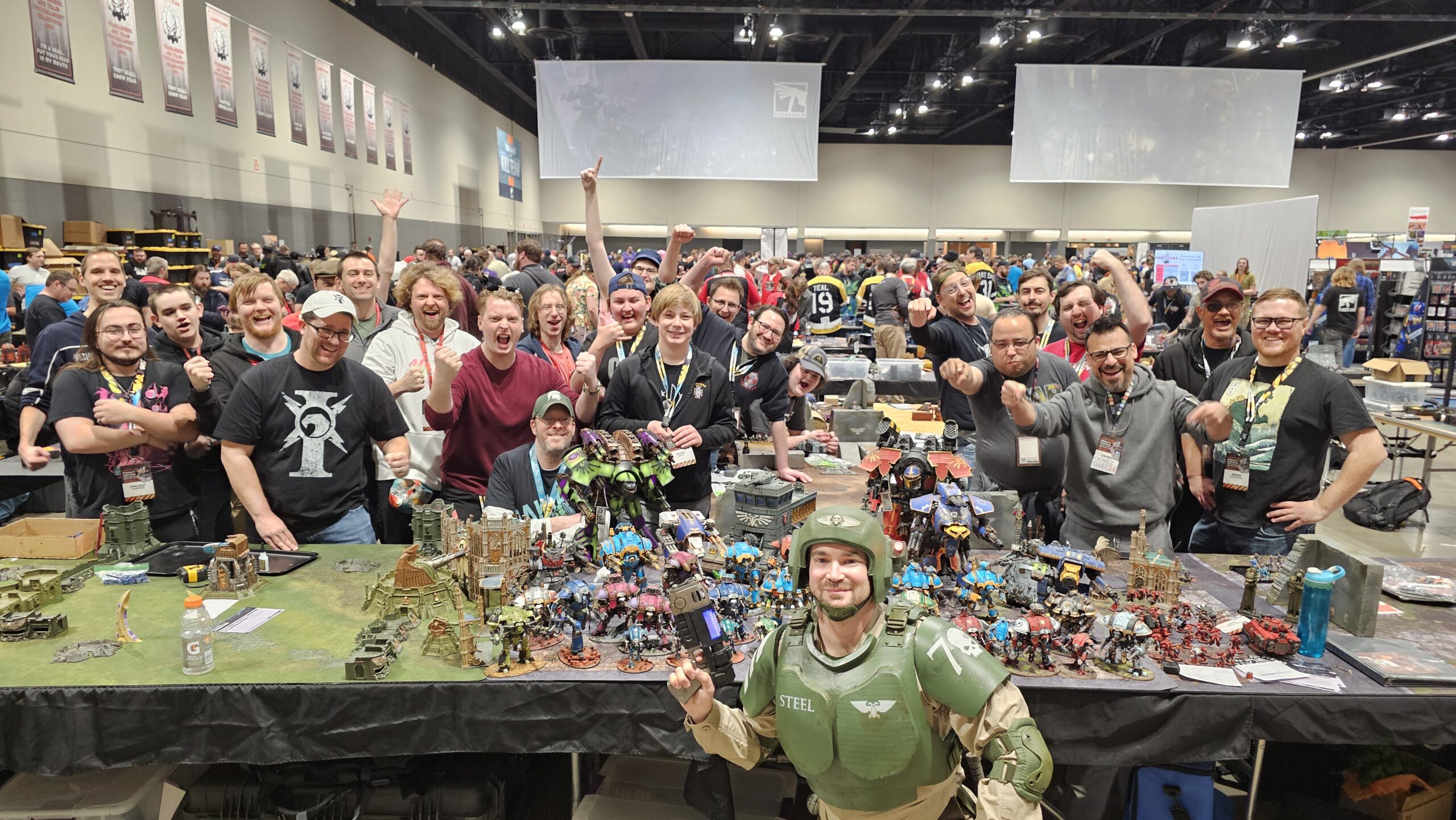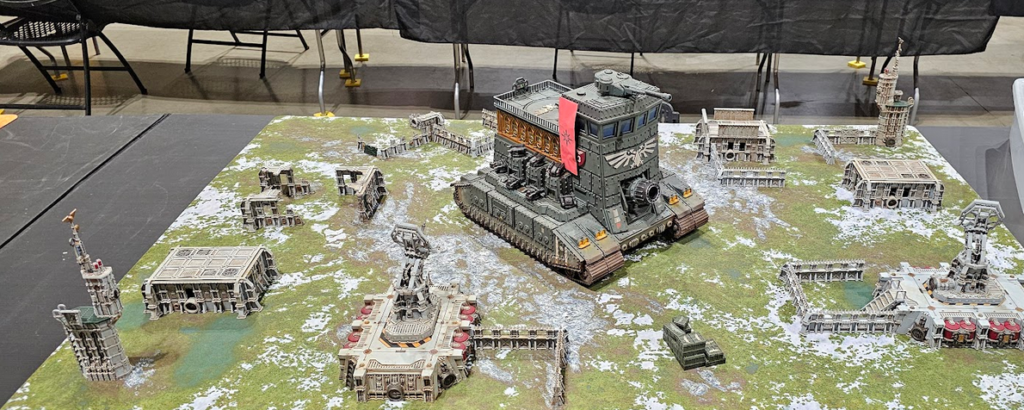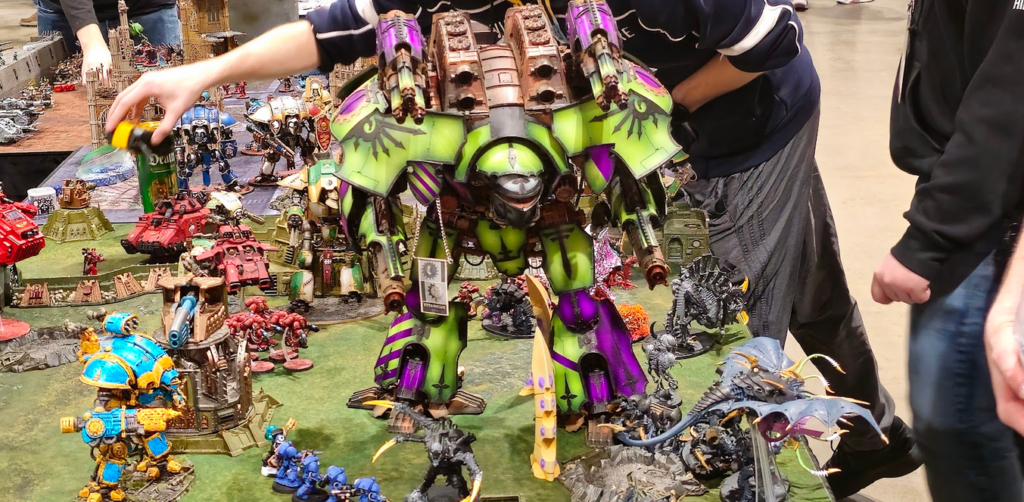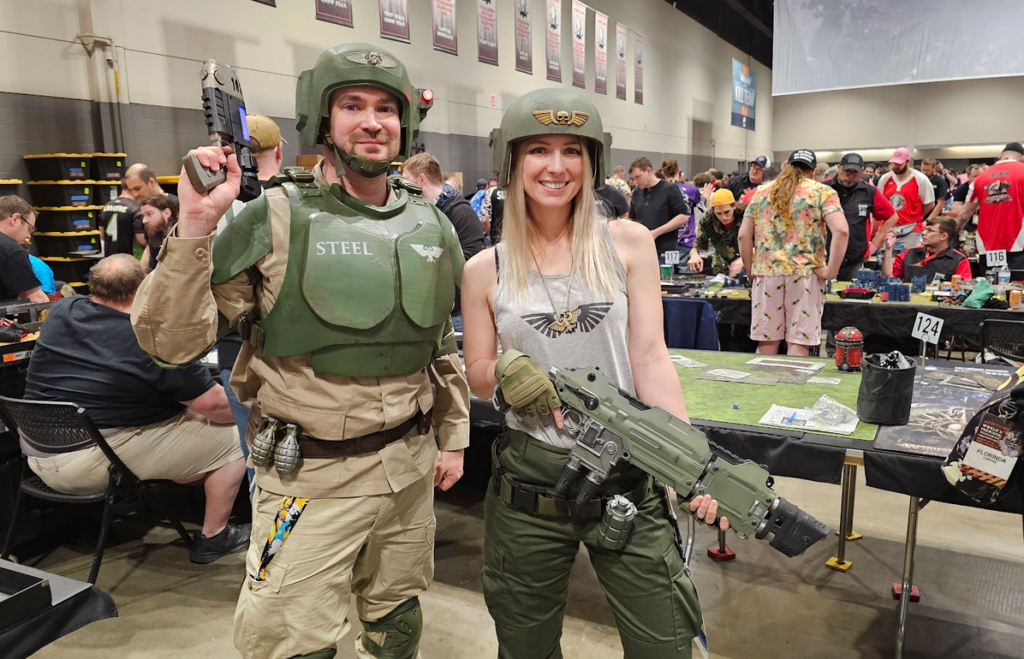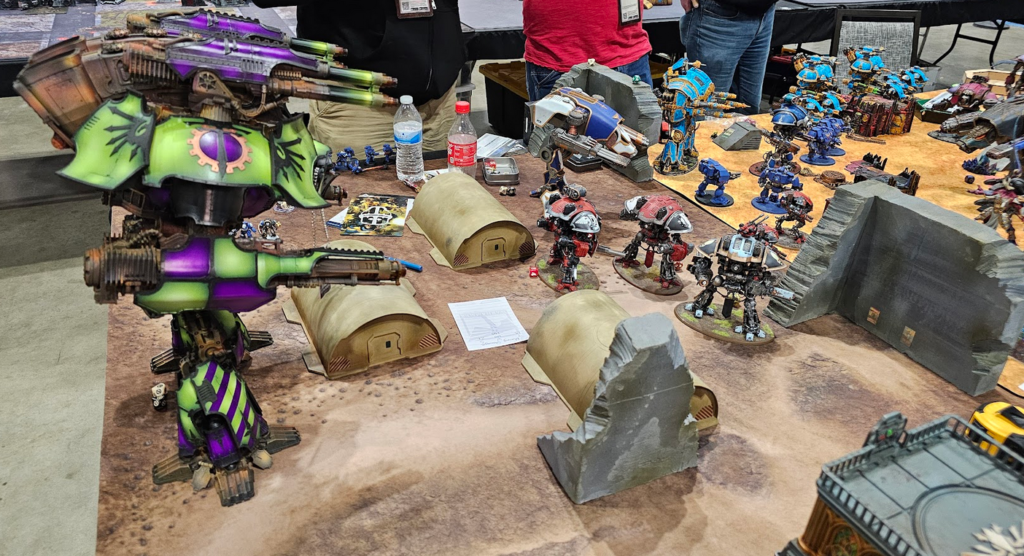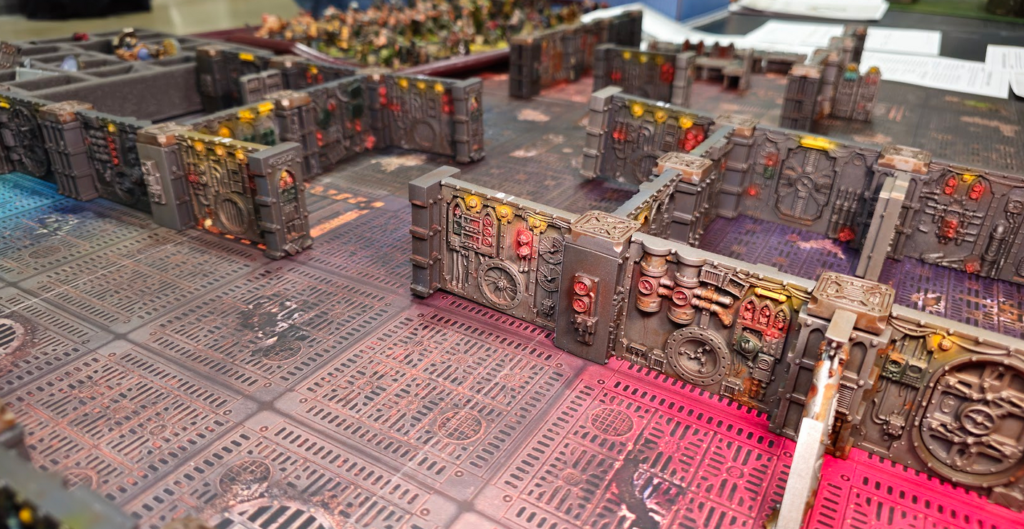Hi all,
Recently I was able to chat with Shae, the organizer for the 2024 Adepticon Narrative Event. I wanted to share our discussion for anyone who is thinking of attending these kinds of events, or even planning their own!
1. Tell us a little bit about yourself! What armies do you play? How long have you played 40k?
I’m Cadian Sergeant Steel, also known as Shae Strait to my friends, or even Sgt Slaughter to the fans of Heroes Brush Hour Twitch Stream. I’ve been playing the finest army in the 41st millennium for over a decade, the mighty and brave Cadians! I do also enjoy Custodes, Ultramarines, and any of the Imperial Agents type of units as well. Anything other than this would be heresy (so we don’t talk about it)!
2. How have you approached designing this event? How are you planning on involving the players in the event?
First, the event was designed to be intro friendly. I wanted to assume most players did not read the briefing or packet ahead of Adepticon (we all get busy dreaming about our armies and painting them usually). Starting from that, I chose an existing narrative that is mostly unexplored by Games Workshop and placed the events within that. The event was also split up into two phases, one phase happening each day. The first was a Vanguard Assault to establish a beachhead and accomplish certain mission to prepare for a larger invasion. The second phase was a wild Apocalypse game with all 15 tables connected, a spaceship, and an underground industrial complex.
For the Vanguard Assault, the missions were then designed to be one-pagers with different planetary and battlefield themes that guided the rules design.
The planetary was how players scored their “primary” mission of holding points on the battlefield and typically customized for the planet (blowing up objectives, holding the middle, etc).
The battlefield mission was more narrative focused, adding in “action” type features where units may have to give up a shooting and charge phase to complete a task, or hold a satellite dish and relay antenna to send a signal, or perhaps sabotage promethium stored in the refineries, and so forth. These battlefield missions often had different ways for the attacker and defender to score since both should be setting out to accomplish different things.
The other cool thing I did was add in a secret “campaign” mission that was for the larger factions but was kept secret until the first time it was scored, adding some fun mysterious element to keep players intrigued about what their opponent may be up to.
Players got to collaborate with their teams about battlefield selection and matchups. They also got to share their experiences on the battlefield after round one to help their allies choose their hopeful favorites to have the experience they wanted out of the event.
The Apocalypse phase also had several special rules to make sure players remained engaged and in the battle. One example is that units that were destroyed were resurrected on a 3+ and that units that didn’t fit into the 6” table edge from Reserves could still act normally. The biggest impact came from no synchronized phases, which I learned from the Beef and Wing crew at past Adepticons (who inspired me to do more and bigger Warhammer)! In a nutshell, you finished your phases (command, movement, shooting, charge, combats, etc) whenever you got to and never waited for your allies to also finish theirs. Most players played their turns in 30 to 40 minutes, just with more time in certain phases. So this allowed also all players to finish their turn at the same time before moving on to the next team’s turn. It also created an opportunity for more team coordination so that one player didn’t charge a unit too quickly that another player was hoping to shoot and weaken.
The last thing I wanted to do was solve the how to make an Apocalypse game feel like each part of the battlefield matters. Too often when you play Apocalypse, objective marker get lost under piles of troops, or everyone gathers in one or two corners for a fight. This was solved through a custom mechanic developed by my buddy Jerry and I where each battlefield (gaming mat) had wounds and a stat block similar to a fortification. Each battlefield was worth victory points equal to the points remaining on it at the end of round 5 (and yes, we got through all 5 rounds). I started out with each battlefield having 150 wounds and there were 15 scorable tables (the spaceship and underground complex didn’t count since they had their own unique roles). That’s 2,250 possible points! This gave the titans something to do other than just shoot each other and for players to think critically about moving around and holding areas. However… we ended up having to heal the battlefields by overloading the Ork shrine at the end of round 3 because things were looking bleak. Then to my surprise, by the end of battleround 5, both sides had committed to a scorched earth approach and destroyed the over 3,000 wounds on just the battlefields! That was a story I did not expect, but it couldn’t have been more Warhammer 40k. In the end, no one truly won the planet as there was nothing useful left on its surface.
3. How have your experiences as a participant in narrative events informed how you have designed this event?
Most definitely! I took a lot of inspiration from past narrative 40k events including NOVA Open 40k Narrative and the Grand Narrative and created immersive tables that fit the narrative for the rules written (airfields, military bunkers, mining facilities, promethium refineries, urban ruins, etc). That where I got the inspiration for the secret campaign mission too and took the approach straight from the NOVA Open of choosing those from the Tyrannic War secondary mission cards.
I also dressed up in cosplay for the entire event! That also came directly from both events, although I did not act as well as the staff did at either of those. I did have an amazing moment where Wargamer Girl, Miranda, helped me give a briefing by acting like a silly, insubordinate private who imitated my every gesture behind my back. She was also dressed like as a loyal guardsman and had a great outfit and hotshot lasgun to go along with it.
4. What was the narrative hook for this event?
After the Fall of Cadia, splinters of the fleeing Cadian fleets arrived in the nearby Agripinaa System, which had fallen prior to Cadia. They discovered an earlier fleet had been trapped and destroyed by the forces of Chaos. In their arrogance, the Chaos forces left themselves open to being surrounded on Faith’s Anchorage. After getting their vengeance, the Imperium established Faith’s Anchorage as a base of operations to begin retaking Agripinaa, providing safe refuge for other fleeing ships, and ensuring that the Chaos forces didn’t make it to Terra itself.
The counter assault was focused on the inner most planet, a mining world named Orax. If the Imperium could take this planet, they could weaken the Chaos force’s ability to produce weapons and vehicles on primary planet of Agripinaa which was a Forge World. The Xenos forces had their own motives and jumped in as they saw advantageous for themselves in the moment. The fate of Orax would be decided during Adepticon 2024.
This did create a very typical alignment of armies into factions, but it made it easy for players to understand their place in the story. But that isn’t to say that confined us in the story telling, a still allowed us to have hidden agendas, commit betrayals, and much more.
5. Are there any fun or custom campaign mechanics you plan on using?
There were so many. One of my favorites is how the results of the Vanguard phase determined the rules for the Apocalypse game. Depending on which faction won or lost (Imperium, Chaos, and Xenos), a certain outcome was set and that came out as a rule to reflect it. Some of those rules were No Line of Sight between certain table gaps because the Eldar had set those promethium fields on fire, or whoever had control of the spaceships in orbit got the ability to launch orbital bombardments each rough on the battlefields they selected but could lose that ability if the other team seized the space ship during the Apocalypse game!
Another cool mechanic was the Orks chose to activate hidden webway portals across the planet’s surface. This came into play during the Apocalypse game where every other table had a webway portal and armies could be teleported to any other battlefield with a webway portal if there was room around it to deploy. I think it was all part of the Eldar’s greater plan to weaken both the Imperium and Chaos, but who knows what the Farseers truly saw and hoped to achieve.
6. Are you thinking about using any crusade mechanics? Why or why not?
Unfortunately, not at all. The reason is that the event was too short, Crusade would add additional bookkeeping making it harder for players to jump in, and it honestly works best with a small group of players doing a story together, whereas we had over 30 different players in just three games.
7. What advice would you have for someone hoping to run their own narrative event?
Best advice I can give you is twofold:
First, find inspiration. Go to events. Read about events. Read the GW Crusade books. Read old rulebook material. Find what excites you and others. Don’t be afraid to try weird or custom things!
For example, I created my own custom, easy to use Boarding Action tables and rules for that regular 40k players with 1500 point armies could jump inside a spaceship and duke it out with ease. It wasn’t perfect, but it was fun.
Second, run the event YOU want to run. If you are inspired and excited, most of the time the players will be too. Bring the excitement as the organizer and it’ll make the experience even better for everyone else.
And remember, Frontline Gaming sells gaming products at a discount, every day in their webcart!

